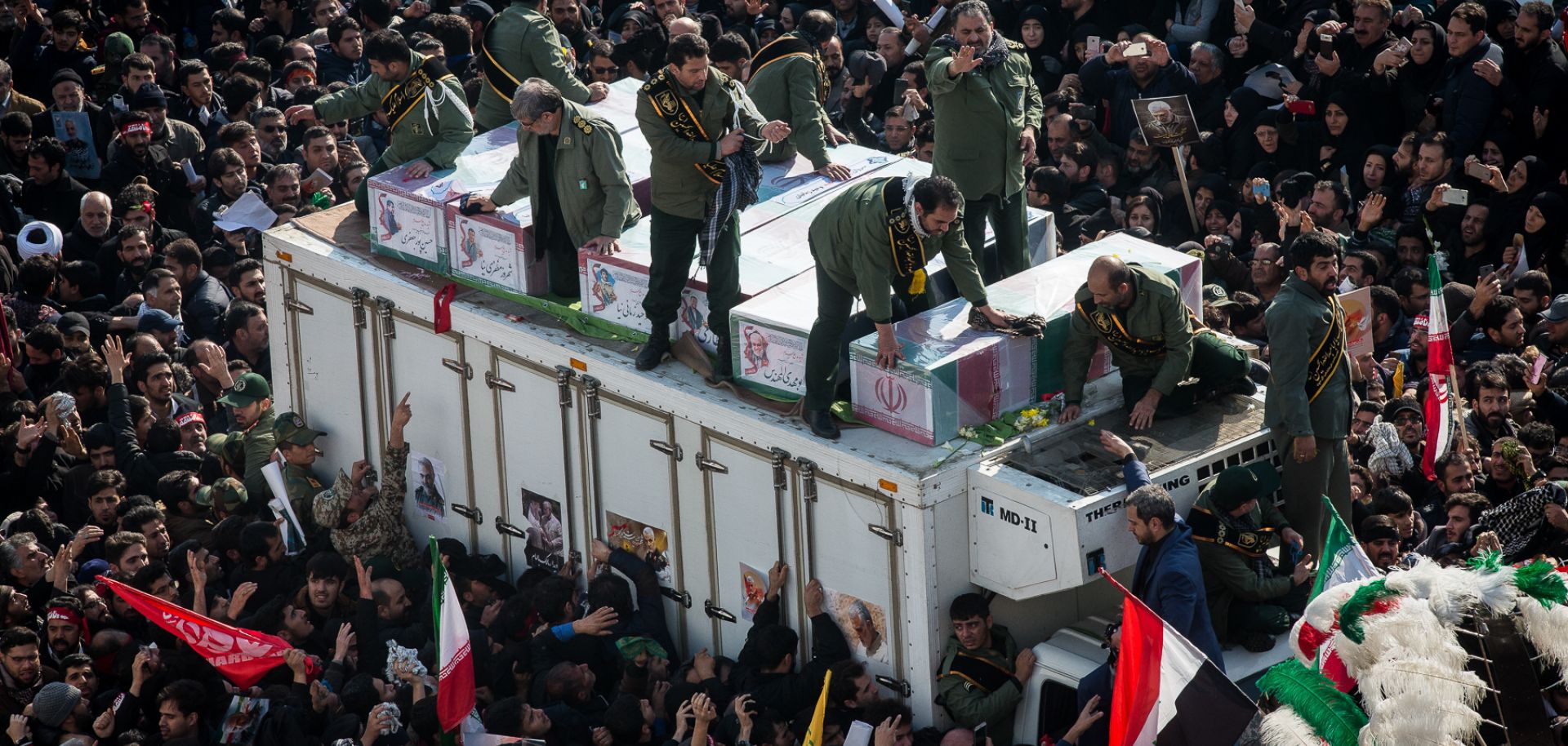COLUMNS
Evaluating the State of Iranian Terrorism Capabilities

Jan 7, 2020 | 10:00 GMT

The funeral procession for IRGC-Quds Force head Qassem Soleimani on Jan. 6, 2020, in Tehran, Iran, after his Jan. 3 death in a U.S. airstrike.
(HAMID VAKILI/NurPhoto via Getty Images)
Highlights
- In the wake of the U.S. airstrike that killed the head of Iran's Islamic Revolutionary Guard Corps' Quds Force, the question is not if Iran will retaliate, but when, where and how it will do so.
- Iran's clerical regime has used terrorism over the decades to pursue asymmetric warfare with stronger adversaries via government operatives or proxies.
- While potential Iranian terrorism is a cause for concern, it is no reason to panic. Iran's terrorist operatives can be detected and its attacks thwarted.
Subscribe Now
SubscribeAlready have an account?
